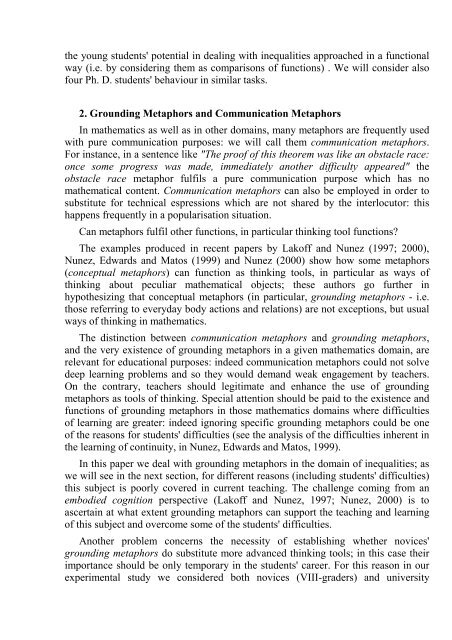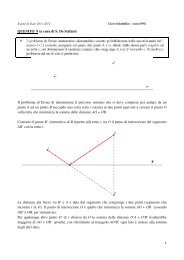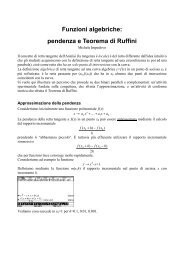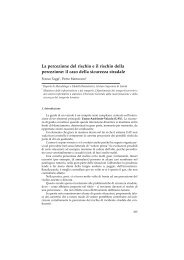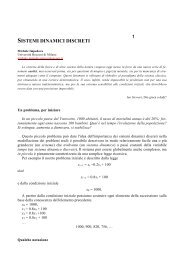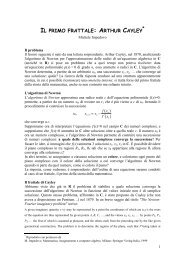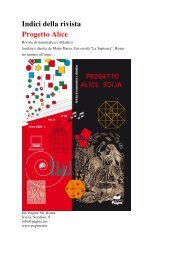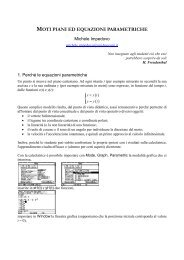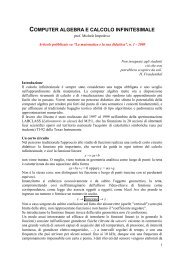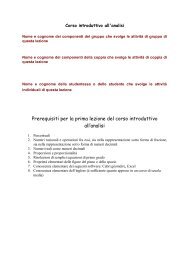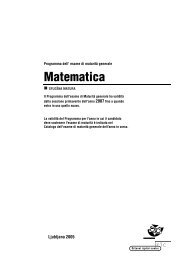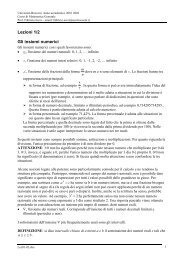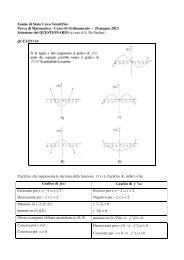metaphors in teaching and learning mathematics - Matematica
metaphors in teaching and learning mathematics - Matematica
metaphors in teaching and learning mathematics - Matematica
Create successful ePaper yourself
Turn your PDF publications into a flip-book with our unique Google optimized e-Paper software.
the young students' potential <strong>in</strong> deal<strong>in</strong>g with <strong>in</strong>equalities approached <strong>in</strong> a functional<br />
way (i.e. by consider<strong>in</strong>g them as comparisons of functions) . We will consider also<br />
four Ph. D. students' behaviour <strong>in</strong> similar tasks.<br />
2. Ground<strong>in</strong>g Metaphors <strong>and</strong> Communication Metaphors<br />
In <strong>mathematics</strong> as well as <strong>in</strong> other doma<strong>in</strong>s, many <strong>metaphors</strong> are frequently used<br />
with pure communication purposes: we will call them communication <strong>metaphors</strong>.<br />
For <strong>in</strong>stance, <strong>in</strong> a sentence like "The proof of this theorem was like an obstacle race:<br />
once some progress was made, immediately another difficulty appeared" the<br />
obstacle race metaphor fulfils a pure communication purpose which has no<br />
mathematical content. Communication <strong>metaphors</strong> can also be employed <strong>in</strong> order to<br />
substitute for technical espressions which are not shared by the <strong>in</strong>terlocutor: this<br />
happens frequently <strong>in</strong> a popularisation situation.<br />
Can <strong>metaphors</strong> fulfil other functions, <strong>in</strong> particular th<strong>in</strong>k<strong>in</strong>g tool functions<br />
The examples produced <strong>in</strong> recent papers by Lakoff <strong>and</strong> Nunez (1997; 2000),<br />
Nunez, Edwards <strong>and</strong> Matos (1999) <strong>and</strong> Nunez (2000) show how some <strong>metaphors</strong><br />
(conceptual <strong>metaphors</strong>) can function as th<strong>in</strong>k<strong>in</strong>g tools, <strong>in</strong> particular as ways of<br />
th<strong>in</strong>k<strong>in</strong>g about peculiar mathematical objects; these authors go further <strong>in</strong><br />
hypothesiz<strong>in</strong>g that conceptual <strong>metaphors</strong> (<strong>in</strong> particular, ground<strong>in</strong>g <strong>metaphors</strong> - i.e.<br />
those referr<strong>in</strong>g to everyday body actions <strong>and</strong> relations) are not exceptions, but usual<br />
ways of th<strong>in</strong>k<strong>in</strong>g <strong>in</strong> <strong>mathematics</strong>.<br />
The dist<strong>in</strong>ction between communication <strong>metaphors</strong> <strong>and</strong> ground<strong>in</strong>g <strong>metaphors</strong>,<br />
<strong>and</strong> the very existence of ground<strong>in</strong>g <strong>metaphors</strong> <strong>in</strong> a given <strong>mathematics</strong> doma<strong>in</strong>, are<br />
relevant for educational purposes: <strong>in</strong>deed communication <strong>metaphors</strong> could not solve<br />
deep learn<strong>in</strong>g problems <strong>and</strong> so they would dem<strong>and</strong> weak engagement by teachers.<br />
On the contrary, teachers should legitimate <strong>and</strong> enhance the use of ground<strong>in</strong>g<br />
<strong>metaphors</strong> as tools of th<strong>in</strong>k<strong>in</strong>g. Special attention should be paid to the existence <strong>and</strong><br />
functions of ground<strong>in</strong>g <strong>metaphors</strong> <strong>in</strong> those <strong>mathematics</strong> doma<strong>in</strong>s where difficulties<br />
of learn<strong>in</strong>g are greater: <strong>in</strong>deed ignor<strong>in</strong>g specific ground<strong>in</strong>g <strong>metaphors</strong> could be one<br />
of the reasons for students' difficulties (see the analysis of the difficulties <strong>in</strong>herent <strong>in</strong><br />
the learn<strong>in</strong>g of cont<strong>in</strong>uity, <strong>in</strong> Nunez, Edwards <strong>and</strong> Matos, 1999).<br />
In this paper we deal with ground<strong>in</strong>g <strong>metaphors</strong> <strong>in</strong> the doma<strong>in</strong> of <strong>in</strong>equalities; as<br />
we will see <strong>in</strong> the next section, for different reasons (<strong>in</strong>clud<strong>in</strong>g students' difficulties)<br />
this subject is poorly covered <strong>in</strong> current teach<strong>in</strong>g. The challenge com<strong>in</strong>g from an<br />
embodied cognition perspective (Lakoff <strong>and</strong> Nunez, 1997; Nunez, 2000) is to<br />
ascerta<strong>in</strong> at what extent ground<strong>in</strong>g <strong>metaphors</strong> can support the teach<strong>in</strong>g <strong>and</strong> learn<strong>in</strong>g<br />
of this subject <strong>and</strong> overcome some of the students' difficulties.<br />
Another problem concerns the necessity of establish<strong>in</strong>g whether novices'<br />
ground<strong>in</strong>g <strong>metaphors</strong> do substitute more advanced th<strong>in</strong>k<strong>in</strong>g tools; <strong>in</strong> this case their<br />
importance should be only temporary <strong>in</strong> the students' career. For this reason <strong>in</strong> our<br />
experimental study we considered both novices (VIII-graders) <strong>and</strong> university


